Renting affordability slumps as RBA warns of further pain
Things have gone from bad to worse for renters as new figures reveal affordability in the majority of Australia has hit its lowest level since before the Covid-19 pandemic.
Breaking News
Don't miss out on the headlines from Breaking News. Followed categories will be added to My News.
Rental affordability across Australia’s capital cities has fallen to its lowest levels since the onset of the pandemic, a new report has revealed, just days after the Reserve Bank warned conditions in the rental market were unlikely to ease any time soon.
According to the latest Rental Affordability Index, released by peak housing body National Shelter and SGS Economics, every capital city bar Hobart and Canberra experienced a decline in rental affordability compared with 2022.
The index measures affordability by comparing household incomes with median rents.
Sydneysiders were the worst off, with affordability dropping 13 per cent, followed by Melbourne and Perth, which experienced a 10 per cent decline.
National Shelter chief executive Emma Greenhalgh said more households were feeling the pinch as income growth failed to keep up with rising rental costs, which have risen 7.6 per cent in the past 12 months according to ABS figures.
“Rental affordability in Australia is going from bad to worse,” she said.
“In the past year, renters have been smashed with enormous rent hikes well beyond income growth.

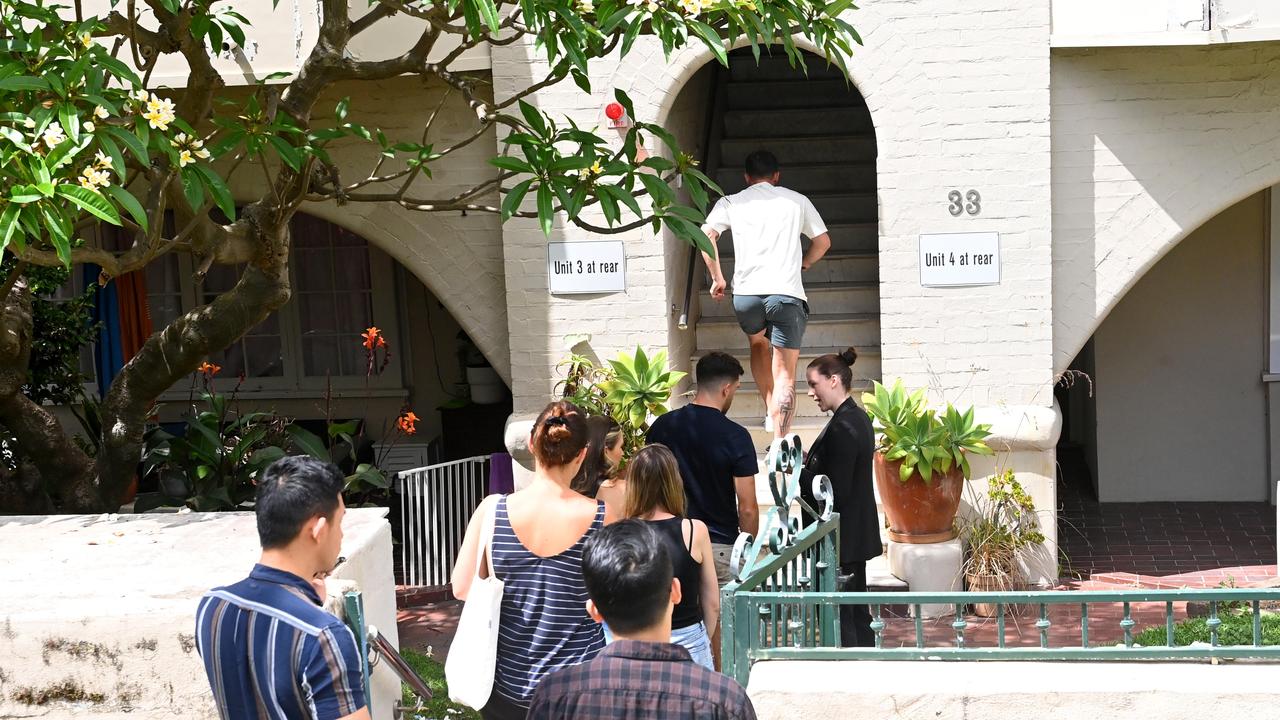
“With vacancy rates so incredibly low, landlords have been able to pass on interest rate rises to tenants - and the pressure is only set to increase following last week’s rate rise.”
Releasing its latest quarterly forecasts on Friday, the RBA noted advertised rents had risen 30 per cent since before the pandemic, much more than the overall increase in rents, while warning that the tough rental market was unlikely to ease.
“Together with historically low vacancy rates and little sign that tight rental market conditions will ease in the near term, this is expected to keep rent inflation elevated for some time,” the RBA said in Friday’s statement on monetary policy.
The growing challenge of securing a rental property has coincided with a rise in Australia’s population by 563,200 people – including 454,400 new migrants – in the year to March.
Over the same period, new dwelling approvals tumbled by 17.3 per cent according to ABS figures.
Housing Minister Julie Collins said that the Commonwealth Government would continue to work with states and territories to “ensure more Australians have a safe and affordable place to call home.
“At a federal level, our focus is on improving housing supply, because this is the best way to improve housing affordability for renters and buyers,” she said.
“That’s why we’ve made significant announcements around boosting supply right across the country, from improving taxation arrangements for investments in build-to-rent accommodation to directly funding social rental homes.”
AUSTRALIA’S 10 MOST UNAFFORDABLE SUBURBS REVEALED:
- Jindabyne, Regional NSW (2627) - Rated as extremely unaffordable with a median weekly rent of $1150, the average household spends 70 per cent of their income on rent.
- Seaforth, Sydney (2092) - Rated as extremely unaffordable with a median weekly rent of $1450, the average household would spend 65 per cent of their income on rent.
- City Beach, Perth (6015) - Rated as severely unaffordable with a median weekly rent of $1200, the average household would spend 59 per cent of their income on rent.
- Eumundi, Regional QLD (4562) - Rated as severely unaffordable with a median weekly rent of $1050, the average household would spend 58 per cent of their income on rent.
- Northbridge, Sydney (4562) - Rated as severely unaffordable with a median weekly rent of $1175, the average household would spend 54 per cent of their income on rent.
- Byron Bay, Regional NSW (2481) - Rated as severely unaffordable with a median weekly rent of $880, the average household would spend 54 per cent of their income on rent.
- Belrose, Sydney (2085) - Rated as severely unaffordable with a median weekly rent of $1125, the average household would spend 51 per cent of their income on rent.
- Frenchs Forest, Sydney (2086) - Rated as severely unaffordable with a median weekly rent of $1100, the average household would spend 50 per cent of their income on rent.
- Warriewood, Sydney (2102) - Rated as severely unaffordable with a median weekly rent of $1100, the average household would spend 50 per cent of their income on rent.
- . Avalon/Bilgola, Sydney (2107) - Rated as severely unaffordable with a median weekly rent of $1050, the average household would spend 48 per cent of their income on rent.
Read below for where each state and major city stands:
NSW
Eight of the ten most unaffordable suburbs in the nation are within NSW, led by Jindabyne in the Snowy Mountains where the median average is $1150 and rent is 70 per cent of the average rental household’s income.
The data reveals that Sydney’s median rental price has increased by $100 in a year to $650 per week -- an 18.2 per cent jump compared to just a 2.4 per cent rise in rental household income.
Shelter NSW chief executive John Engeler warned that rentals cannot be left to the private market, with no affordable rentals in inner city or coastal suburbs.
“We are past the point of ringing alarm bells about Sydney’s rental affordability,” he said.
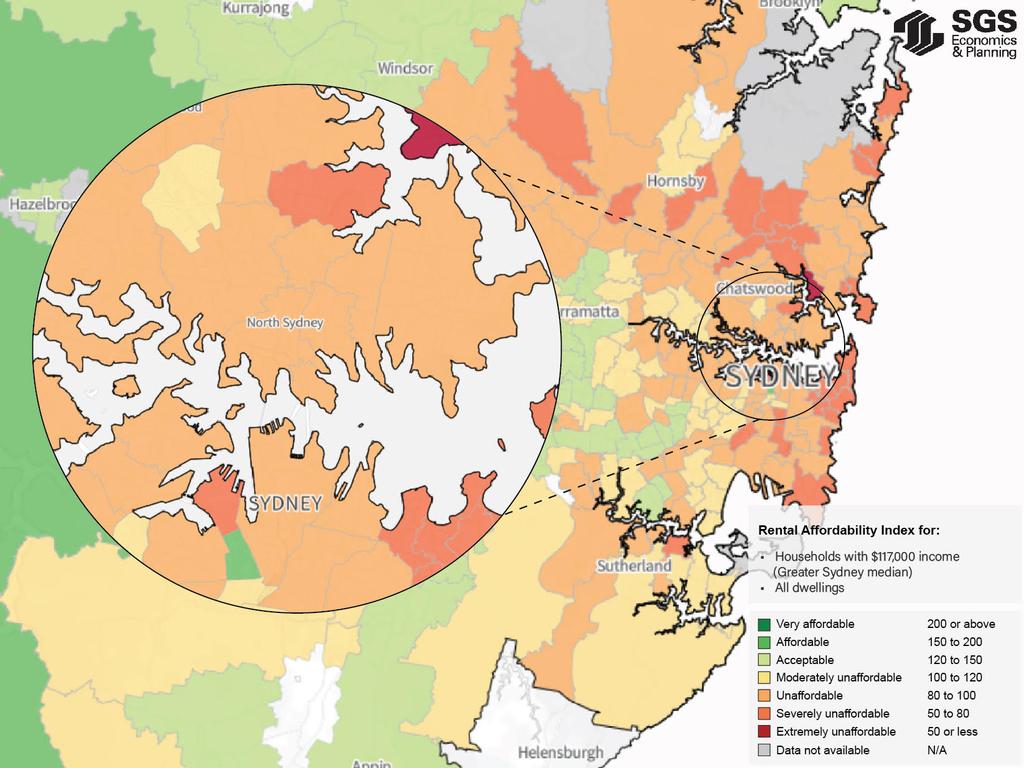
“This deep and entrenched crisis demands a significant expansion of social and affordable housing, stronger renters’ rights and a realistic level of Commonwealth Rent Assistance.”
The situation is only marginally better in regional areas of NSW, which has previously been seen as a safe haven for those on middle and low incomes.
More and more areas are requiring renters to spend over 30 per cent of their income toward housing, suggesting that the crisis is spreading beyond Sydney.
VICTORIA
While Melbourne remains Australia’s most affordable capital for renters, they’re still being priced out with affordability deteriorating by 10 per cent and rents rising 16 per cent in the past year.
An entire corridor from Footscray to Meadow Heights has gone from affordable to out of the budget of the average renter in just one year.
The average renting household will now have to look as far as Sunshine, 15km from the CBD, to find an affordable rental.
Melbourne rental market has been described as “fundamentally broken” by Ms Greenhalgh.

“Melbourne’s rental market is in a crisis and it’s only getting worse,” she said.
“This disproportionately punishes people with the least while also pricing full-time and essential workers out of their own city.”
The problem has also spread to the regions, with just three suburbs (Kerang, Nhil, and Nurmurkah) in Victoria now rated as affordable.
Regional Victoria’s situation was described as “wrong” and an “unacceptable market failure” by Brotherhood of St Laurence chief of services Lulie Ware.
“The rental crisis means there is virtually nowhere in regional Victoria that is genuinely affordable for people on low incomes and income support payments,” she said.
QUEENSLAND
Once regarded as one of the nation’s most affordable cities, Brisbane is now the third most unaffordable capital in Australia for renters, as affordability has dropped by nine per cent in the past 12 months.
In just three years, the vast majority of inner Brisbane suburbs have gone from affordable to unaffordable, while traditionally more accessible suburbs on the outskirts of the city have declined by 20 per cent in the same period.
The rental crisis is particularly impacting those on low income, with a single pensioner now having to spend 64 per cent of their income just to rent a one-bedroom home.

A single person on JobSeeker is now completely priced out of many suburbs, with the average rent taking up 106 per cent of their income.
Things are even worse in regional Queensland, which is the most unaffordable place in Australia to rent.
Rental stress is at an all-time high, with the average weekly rent of $553 taking up 30 per cent of the average household income for the first time.
The least affordable suburb in regional Queensland is Eumundi on the Sunshine Coast where a median rental of $1,050 per week costs 58 per cent of the average regional Queensland rental household income.
SOUTH AUSTRALIA
Adelaide’s rental affordability crisis is now at its worst point in a decade according to the new data.
Those on low incomes are bearing the brunt of the affordability decline, with rentals now deemed as unaffordable for Adelaideans on JobSeeker, the age pension or working as a single parent.
Renters now have to look at least 30km away from the city’s CBD to find something affordable.
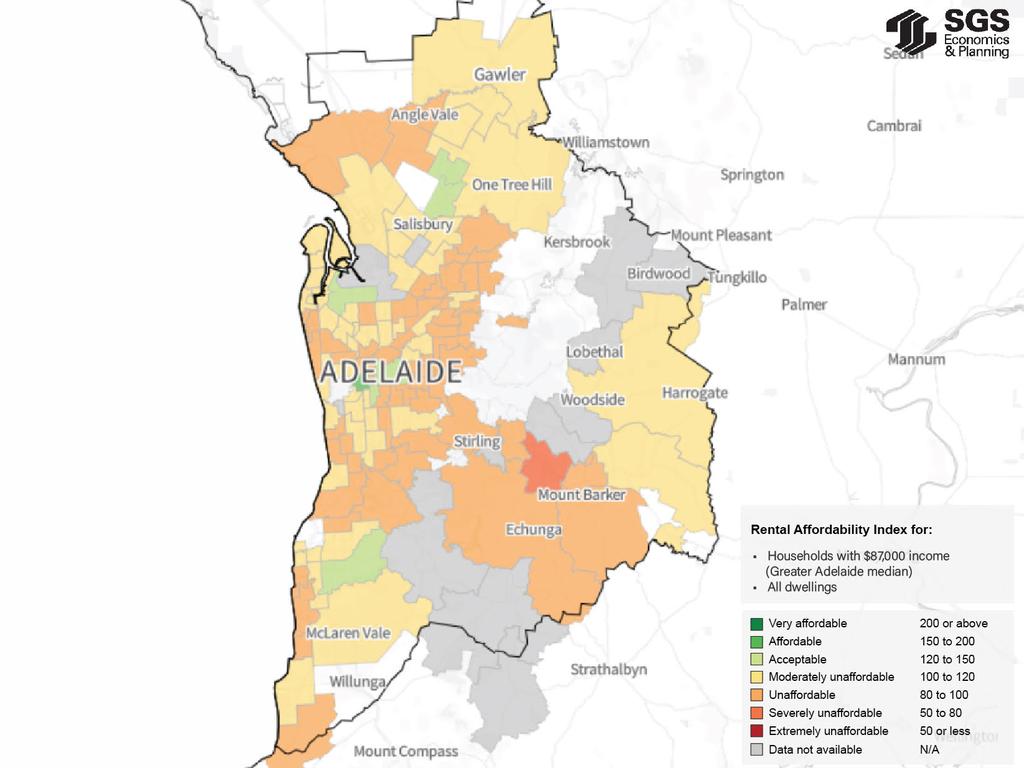
The situation in South Australia calls for caps on rent increases to the level of inflation according to Shelter SA chief executive Dr Alice Clark.
“What’s happening in Adelaide shows that Australia’s rental market is being pushed to the brink of disaster through a combination of soaring prices and low supply,” she said.
“Even moving to the regions does not provide affordability relief anymore.
“Outside of Adelaide, rents have risen 12.9 per cent in the last year, while affordability has declined by 8 per cent, adding even more pressure to rental households, who have even lower average incomes of $76,000 a year in the regions.”
WESTERN AUSTRALIA
Western Australia has experienced one of the largest drops in affordability in the nation, with Perth plummeting by 10 per cent and regional areas dropping by eight per cent.
Only one Perth postcode around Winthrop and Bateman offers affordable rents - costing 15 per cent or less of the average income.
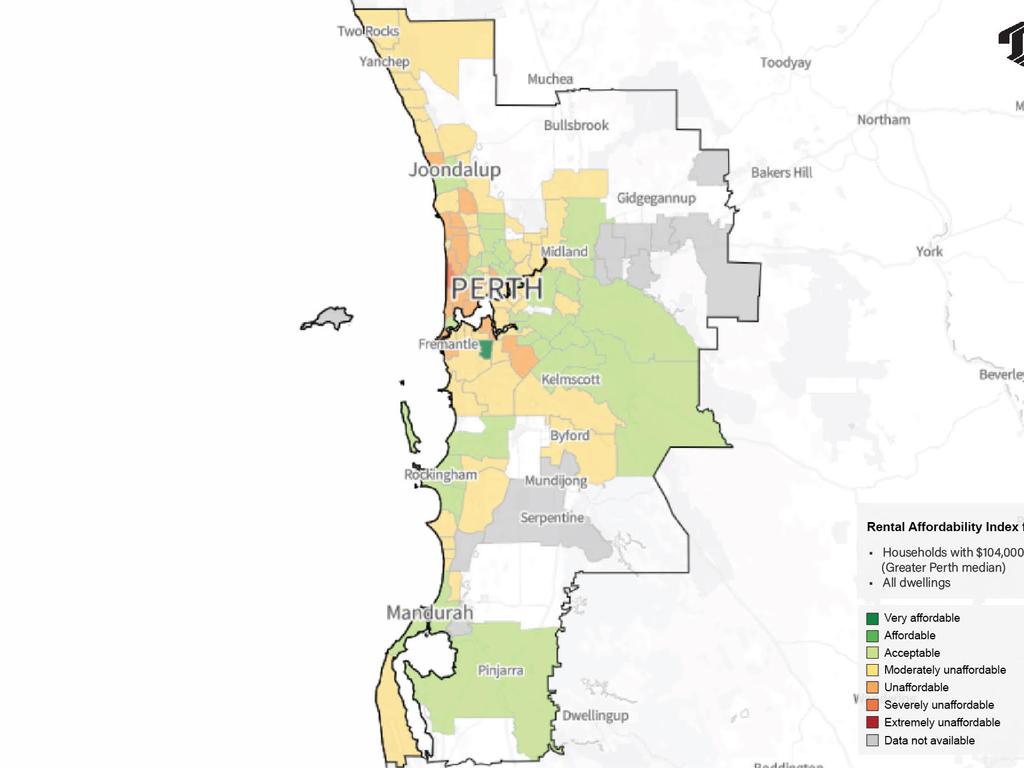
“From Fremantle to Fitzroy Crossing, WA renters have been smashed by some of the worst rent rises in the country over the past year,” Ms Greenhalgh said.
“This dire rental crisis is caused by a chronic shortage of available and affordable homes, an issue which requires continued urgent co-operation across the WA housing sector and government.”
TASMANIA
Hobart renters now face the “toughest conditions in the country” according to Shelter’s data, with regional Tasmanians not far behind.
There are serious concerns that more people could be thrown into homelessness with the median rental rate in Hobart now 60 per cent higher than it was in 2016.
Low-income renters in Hobart and the regional areas of the state are now unable to find an affordable property, except in the state’s northwest.
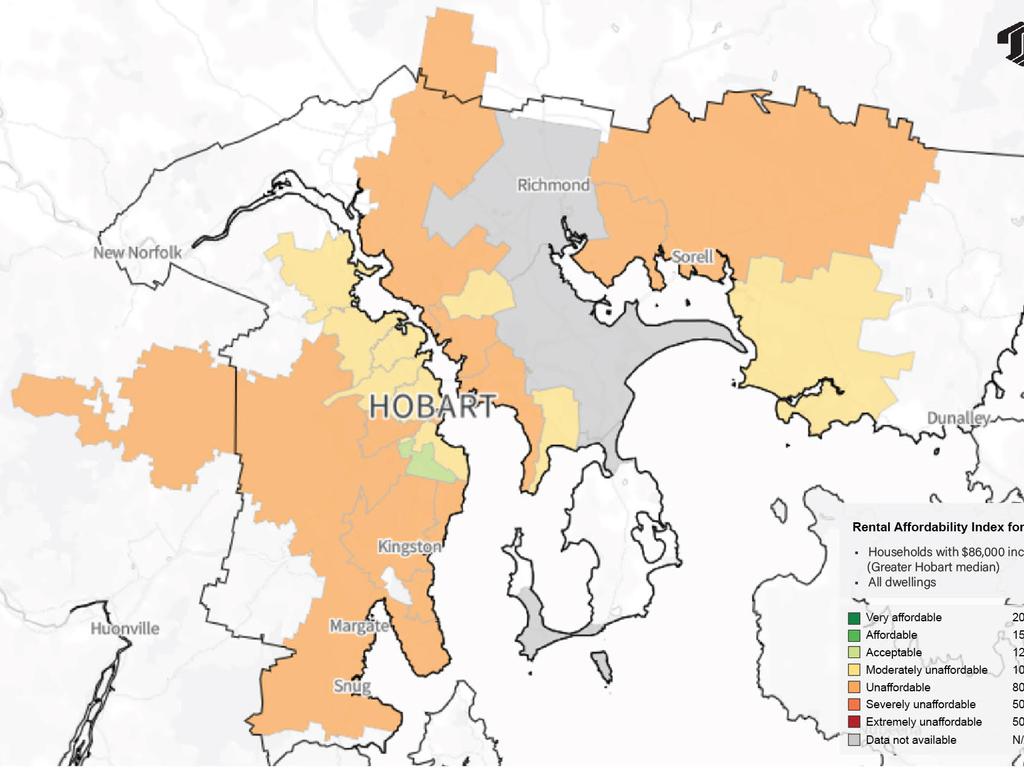
The situation in Tasmania is shocking but not surprising according to Shelter Tasmania chief executive Pattie Chugg, with those on average incomes now forking out 29 per cent of their pay toward rent.
“Hobart rents are almost equal to rents in Melbourne, even though wages here are significantly lower,” she said.
“This is an unacceptable level of pressure, and it is pushing people right to the brink of homelessness.
Originally published as Renting affordability slumps as RBA warns of further pain






